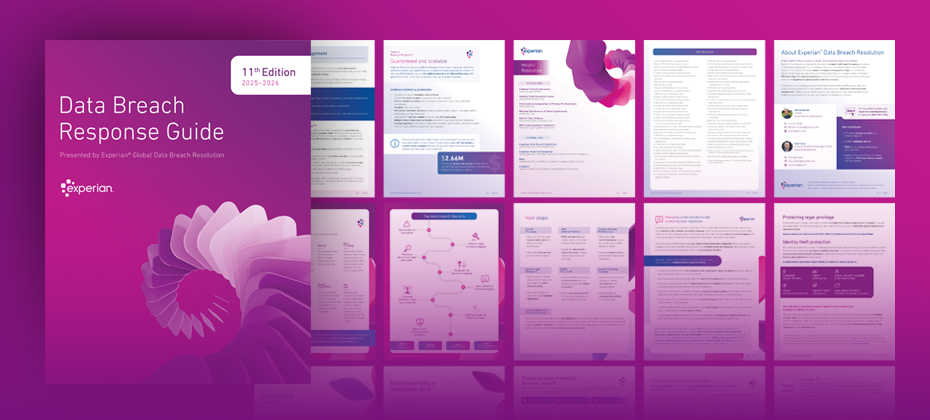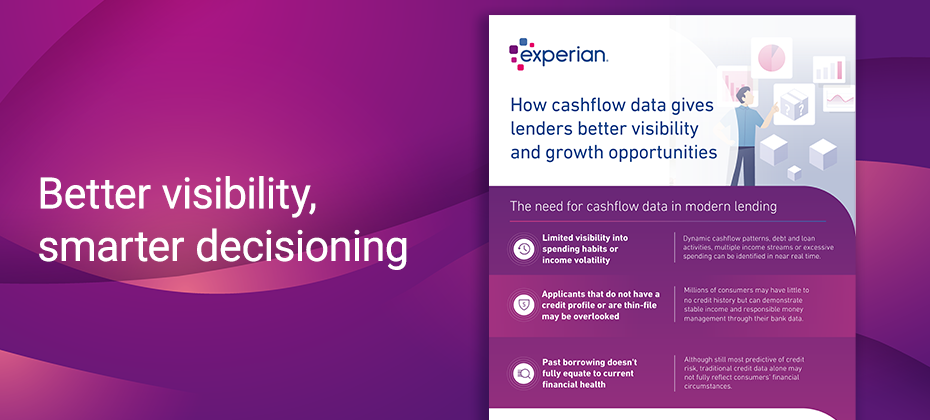Latest Posts

Executive Summary The July 2025 housing market reveals a landscape of shifting consumer behaviors, evolving lender strategies, and continued strength in borrower performance—especially within home equity. Origination volumes have dipped slightly, but direct marketing, particularly through Invitation to Apply (ITA) campaigns, is accelerating. As key players exit the space, gaps are opening across both marketing and origination, creating clear opportunities for agile institutions. This phase signals both caution and potential. The winners will be those who refine their marketing, sharpen segmentation, and deploy smarter risk monitoring in real time. TL;DR Risk Profile: Mortgage and HELOC delinquencies remain low. Slight increases in 90+ DPD are not yet cause for concern. Mortgage Originations: Modestly down, but marketing remains aggressive. Invitation to Apply (ITA) volumes outpacing prescreen. Home Equity Originations: Stable originations, competitive marketing volumes. ITA volumes outpacing prescreen similar to mortgage. Opportunity: Targeted direct mail and refined segmentation are growth levers in both mortgage and home equity. Risk Environment: Resilient Yet Watchful Experian’s July data shows both mortgage and home equity delinquencies hovering at historically low levels. Early-stage delinquencies dropped in June, while late-stage (90+ days past due) nudged upward—still below thresholds signaling broader distress. HELOCs followed a similar path. Early-stage movement was slightly elevated but well within acceptable ranges, reinforcing borrower stability even in a high-rate, high-tariff environment. Takeaway: Creditworthiness remains strong, especially for real estate–backed portfolios, but sustained monitoring of 90+ DPD trends is smart risk management. Home Equity: Volume Holds, Competition Resets Home equity lending is undergoing a major strategic reshuffle. With a key market participant exiting the space, a significant share of both marketing and originations is now in flux. What’s happening: Direct mail volumes in home equity nearly match those in first mortgages—despite the latter holding larger balances. ITA volumes alone topped 8 million in May 2025. Total tappable home equity stands near $29.5 trillion, underscoring a massive opportunity.(source: Experian property data.) Lenders willing to recalibrate quickly can unlock high-intent borrowers—especially as more consumers seek cash flow flexibility without refinancing into higher rates. Direct Mail and Offer Channel Trends The continued surge in ITA campaigns illustrates a broader market pivot. Lenders are favoring: Controlled timing and messaging Multichannel alignment Improved compliance flexibility May 2025 Mail Volumes: Offer Type Mortgage Home Equity ITA 29.2M 25.8M Prescreen 15.6M 19.0M Strategic Insights for Lenders 1. Invest in Personalized Offers Drive better response rates with prescreen or ITA campaigns. Leverage data assets like Experian ConsumerView for ITA’s for robust behavioral and lifestyle segmentation. For prescreen, achieve pinpoint-personalization with offers built on propensity models, property attributes, and credit characteristics. 2. Seize the Home Equity Opening Use urgency-based messaging to attract consumers searching for fast access to equity—without the complexity of a full refi. Additionally, as mentioned above, leverage propensity, credit, and property (i.e. equity) data to optimize your marketing spend. 3. Strengthen Risk Controls Even in a low-delinquency environment, vigilance matters. Account Review campaigns, custom scorecards, and real-time monitoring help stay ahead of rising 90+ DPD segments. 4. Benchmark Smarter Competitive intelligence is key. Evaluate offer volumes, audience segmentation, and marketing timing to refine your next campaign. FAQ Q: What does the exit of a major home equity player mean? A: It leaves a significant gap in both marketing activity and borrower targeting. Lenders able to act quickly can capture outsized share in a category rich with equity and demand. Q: How should lenders respond to the evolving risk profile? A: Continue to monitor performance closely, but focus on forward-looking indicators like trended data, income verification, and alternative credit signals. Conclusion The housing market in July 2025 presents a clear message: the fundamentals are sound, but the strategies are shifting. Those ready to optimize outreach by making smarter use of data will seize a disproportionate share in both mortgage and home equity. Want to stay ahead? Connect with Experian Mortgage Solutions for the insights, tools, and strategies to grow in today’s evolving lending environment.

In the latest episode of “The Chrisman Commentary” podcast, Experian's Alison Bird, Product Owner, and Joy Mina, Director, Product Commercialization, discuss how streamlining the verification process helps mortgage lenders serve more borrowers without sacrificing accuracy. Listen to the full episode for all the details and tune in to the previous episode to learn why price transparency is important in the verification process. Listen now

In today’s digital payments landscape, fraudsters are constantly developing new tactics to exploit vulnerabilities. One of the most common credit card schemes financial institutions and merchants face are BIN attacks. But what exactly is a BIN attack, and how does BIN attack fraud work? What is a BIN attack? BIN attacks, a type of card not present fraud, target the Bank Identification Number (BIN) — the first six to eight digits of a credit or debit card number that identify the issuing financial institution. Fraudsters use these digits to systematically generate and test potential card number combinations. The goal of a BIN attack is to discover valid card numbers that can be used for fraudulent transactions. Because BINs are publicly available and consistent across card issuers, they provide a predictable framework for attackers. How does it differ from other types of payment fraud? Payment fraud takes many forms, but BIN attacks stand apart because of their scale and automation. Card testing fraud vs. BIN attacks: Both involve criminals running authorization attempts to identify valid card details. However, card testing typically uses data from a single stolen card, while BIN attacks systematically generate thousands of possible card numbers from a known BIN range. Account takeover fraud vs. BIN attacks: In an account takeover, fraudsters gain access to a customer’s existing account, often through phishing or stolen login credentials. BIN attacks don’t require account access — instead, they exploit card number patterns to guess valid accounts. What are the consequences of a BIN attack? BIN attacks don’t just result in stolen card numbers — they create wide-ranging business risks that can impact operations, revenue and customer trust. For financial institutions and merchants, the ripple effects can be significant: High transaction volumes: BIN attacks are carried out using automated scripts or bots that fire off thousands of transaction attempts per minute. This traffic can overwhelm payment systems, slow down processing and disrupt the checkout experience for legitimate customers. Increased chargebacks: Once fraudsters identify valid cards, they make unauthorized purchases that often result in chargebacks. Both merchants and issuers absorb these losses — merchants lose revenue, while issuers reimburse cardholders. Network and processing costs: Every transaction attempt — even those declined during a BIN attack — still incurs network and processing fees. Merchants and issuers can end up paying for thousands of authorization requests, draining resources. Reputational damage: Today’s consumers expect seamless and secure payments. If they experience frequent declines, blocked cards or fraudulent activity, their trust in the institution or merchant erodes. How to protect against BIN attack fraud Mitigating BIN attacks requires a proactive, layered defense strategy. Financial institutions and merchants should consider: Advanced fraud detection and analytics: BIN attacks generate massive volumes of fraudulent traffic. By leveraging AI-driven analytics and machine learning, institutions and merchants can monitor for unusual transaction patterns, velocity spikes and bot-driven activity. Identity and device intelligence: Fraudsters often hide behind bots, stolen IP addresses and compromised devices. With identity verification and device intelligence solutions, merchants and institutions can better determine whether a transaction is coming from a legitimate customer or a fraudster testing card details. Multi-factor authentication (MFA): BIN attacks succeed on speed and automation, firing off thousands of transactions. MFA can help disrupt this process by requiring additional proof of identity from the customer, such as facial recognition or one-time passcodes. Credit card authentication: BIN attacks exploit the gap between payment credentials and the identity of the person using them. A solution like Experian LinkTM seamlessly connects the payment instrument with the digital identity presented for payment, helping merchants to reduce false declines, fraud and operating expenses. Build a stronger defense against BIN attacks BIN attacks are a growing threat in today’s digital payments ecosystem. But with the right safeguards in place, organizations can stay ahead. Learn how Experian can help you strengthen your fraud defenses to reduce losses and protect customer trust. Learn more

Mid-sized banks are large enough to pursue ambitious growth strategies, like expanding loan portfolios or entering new markets, but not so large that they can withstand major credit losses without consequence. So how do lending organizations manage their credit risk strategies to grow without taking on more risk than they can handle?

This is the first in a series that will highlight auto marketing trends to help you drive more effective marketing campaigns. With the second half of the year underway, one theme continues to prevail in conversations among auto marketers: measurement. With more focus to prove ROI, optimize campaigns in real time, and understand the full consumer journey, marketers are doubling down on attribution while sharpening their analytics tools. One of the most widely adopted platforms in this space is Google Analytics 4 (GA4). Since its full rollout, GA4 has replaced Universal Analytics for digital measurement. Its event-based model offers new ways to track behavior and measure performance, especially in complex, multi-touch journeys like auto shopping. Let’s break down four quick tips to help you unlock the full potential of GA4—plus a quick summary to dial in this type of measurement. GA4 Tune-Up Tips for Smarter Auto Marketing: 1. Event-Based Tracking Offers Full-Funnel Visibility Unlike Universal Analytics, GA4 focuses on events (rather than sessions) by tracking actions such as scroll depth, video views, CTA clicks, and more, giving you detailed insights into how users engage with your site. It’s especially helpful for A/B testing and understanding micro-conversions across the buyer’s online journey. 2. Use Clean, Consistent UTM Parameters UTM parameters tell GA4 “where” your traffic comes from. However, if they’re inconsistent or overly complex, your reports will be too. Use a simple naming convention for channels and campaigns so you can easily see what’s working. See example chart below: 3. Set Up GTM to Capture the Key Events Google Tag Manager (GTM) tells GA4 “what” happens once a consumer arrives to your website. Ensure GTM is set up to record important on-site actions—including page views, form submissions, phone clicks, or test drive bookings. Start with GTM testing by using Preview Mode and Tag Assistant. 4. Extend Your Data Retention Window By default, GA4 only stores user-level data for 2 months. If you want to track long buying cycles or compare year-over-year trends, go into your GA4 settings and extend the retention period to 14 months. GA4 Tune-Up Tips Summary: GA4 is Google’s enhanced analytics platform, built to give marketers a more flexible, cross-platform view of user behavior by using an event-based model designed for the future of measurement. With industries like automotive — offline interactions, third-party sites, and long purchase paths are common. GA4 often needs to be supplemented with additional tools or CRM integration to capture the full buying journey. According to Neilsen, measurement of ROI across channels is more important than ever and marketers have an opportunity to fine tune it. Discover how Experian Automotive can help measure your marketing performance with solutions like OmniImpact for Automotive™ and an Auto Response Analysis. Next Up... From personalized follow-ups to omnichannel messaging, forward-thinking retailers are evolving how they communicate with today’s car shoppers, and measurement is just one piece of the puzzle. In our series, we’ll explore another focus for Auto Marketers in the latter half of 2025: Messaging and Communication with your consumers.

Nearly 19 million U.S. households remain unbanked or credit-invisible,1 not due to a lack of financial responsibility but because traditional credit models alone may not include key financial behaviors. These individuals often save, earn and budget wisely, yet conventional scoring systems do not recognize them. We’ve recently partnered with Plaid, the trusted leader in open finance, to change that. Together, we’re putting cash flow underwriting front and center — giving lenders access to real-time, consumer-permissioned financial data that paints a fuller, more accurate picture of creditworthiness. Why cash flow data matters now In the U.S., many consumers with limited credit histories want to build their profiles but don’t know how. Cash flow underwriting bridges this gap. Cash flow insights reveal real-world financial activity — like income patterns, spending habits and account balances — in real time. This empowers lenders to make smarter, faster and more inclusive credit decisions, while helping consumers gain access to the financial services they deserve. What cash flow insights deliver By incorporating cashflow data into your decisioning strategy, you can: See beyond the score with a richer view of a consumer’s financial health. Accelerate approvals with more accurate and timely insights. Expand access to credit while strengthening portfolio diversity and reducing risk. Download our infographic to see how cash flow underwriting is reshaping lending — and how you can lead the change. Download infographic 1Mullen, C. (2024, November 13). Underbanked US population grows to 14.2%, FDIC finds. Banking Dive.

Credit decisioning has traditionally relied on static data like credit bureau scores, income statements, and past repayment history. As financial behavior becomes more dynamic and consumer expectations shift toward instant decisions, real-time data is emerging as a powerful tool in reshaping how lenders assess risk.

Lending fraud – what is it? Lending fraud is a deceptive practice in which individuals or entities intentionally provide false or misleading information during the loan application process to secure credit or financial gain. This can include using fake identities, inflating income, forging documentation, or applying for loans without the intention of repayment. The consequences are significant: lenders suffer financial losses, consumers experience identity theft or damaged credit scores, and the economic system bears increased risk and regulatory scrutiny. Loan fraud is a growing concern across consumer, commercial, and mortgage lending sectors, affecting institutions of all sizes. How do I safeguard my organization from loan fraud? Preventing lending fraud is a complex, ongoing challenge that requires a multi-layered and holistic approach. As fraud tactics become more sophisticated, especially with the rise of generative AI and digital lending channels, financial institutions must continually evolve their defenses. Strong identity verification is the first line of defense. Lenders should implement advanced authentication tools beyond basic KYC (Know Your Customer) checks. This includes biometric verification, document verification, and device intelligence —technologies that assess the authenticity of the user and the device used during the application process. These tools can help detect synthetic identities — false identities created using a blend of real and fabricated information — increasingly used in loan fraud schemes. Another crucial strategy is real-time data analytics and behavioral monitoring. Lenders can quickly identify anomalies that may indicate fraudulent activity by analyzing applicant behavior, credit history, device usage patterns, and geolocation data in real time. For example, if an applicant submits multiple loan applications from different IP addresses in a short time frame, that could raise a red flag for potential lending fraud. Employee training and awareness are also essential. Frontline staff must be equipped to identify warning signs, such as inconsistencies in application documents or rushed, high-pressure loan requests. Regular fraud prevention training helps employees stay alert and aligned with the organization’s risk management protocols. 57% of financial institutions reported direct fraud losses exceeding $500,000 in the past year, with 25% exceeding $1 million.1 Consumers reported losing more than $12.5 billion to fraud in 2024, which represents a 25% increase over the prior year.2 In addition, robust internal controls and auditing mechanisms are critical in prevention. Organizations should regularly audit loan origination processes and investigate unusual approval patterns to detect insider fraud or systemic vulnerabilities. Finally, consumer education is a vital, often overlooked, aspect of combating loan fraud. Lenders should provide resources to help customers understand the risks of identity theft, encourage them to monitor their credit reports regularly, and empower them to report any suspicious activity. A well-informed customer base can be a valuable early warning system for fraud. With digital lending becoming the norm, preventing lending fraud means staying ahead of increasingly tech-savvy fraudsters. Leveraging data, technology, and education together builds a stronger, more resilient fraud defense framework. Lending fraud + Experian – How we can help With access to the industry’s most advanced fraud detection and identity verification tools, partnering with us gives you a potent edge in combating lending fraud. As a global leader in data, analytics, and technology, our comprehensive and accurate sets of consumer information enable you to spot risks that might be invisible through conventional means. Our approach combines rich data insights with powerful machine learning algorithms, delivering fraud prevention tools that are intelligent, scalable, and highly adaptive. Our fraud detection technologies are designed to protect every stage of the lending lifecycle. From real-time identity verification and multi-factor authentication solutions to behavioral biometrics and device intelligence, so you can detect synthetic identities, manipulated applications, and other forms of loan fraud before they lead to financial loss. In an era where trust is currency, partnering with us doesn’t just help protect against lending fraud — it enhances your reputation as a secure, responsible lender. You gain the confidence of your customers by providing safe, streamlined lending experiences while meeting compliance requirements and reducing operational risk. With us, you’re not just reacting to fraud—you’re anticipating it, preventing it, and confidently growing your business. Learn more 1State of Fraud Benchmark Report. Alloy. (2024). 2New FTC Data Show a Big Jump in Reported Losses to Fraud to $12.5 Billion in 2024. Federal Trade Commission. (2025, March 10).

In 2025, home equity lending has re-emerged as a central theme in the American financial landscape—an evolution not driven by hype, but by hard data, economic realities, and consumer behavior. As homeowners grapple with inflation, rising consumer debt, and a persistent affordability crisis in housing, the home equity line of credit (HELOC) is gaining traction as a practical, flexible, and often misunderstood financial solution.

Data breaches continue to be a reality for organizations across industries, and the complexity of responding to them is only increasing. From AI-driven fraud to third-party exposures, the risk landscape is shifting fast. Having a modern and tested response plan is essential to containing the damage, protecting your customers, and preserving your organization’s reputation when a breach occurs. Experian’s eleventh annual Data Breach Response Guide draws on decades of breach support experience. It offers practical strategies and insights for navigating the moments that matter most: the first hours after a breach and the days that follow. The 2025–2026 guide explores: How AI is shaping new breach and fraud patterns Where organizations are most vulnerable, including third-party and supply chain weak points Consumer expectations and how they influence crisis response How prepared organizations are reducing impact and protecting trust What is required to build a modern, effective breach response plan Organizations with a tested plan can potentially reduce the cost, impact, and long-term consequences of a breach. From real-world case insights to crisis communication templates, this guide is designed to help teams act quickly and confidently. Download the 2025–2026 Data Breach Response Guide to learn how you can strengthen your breach preparedness, reduce risk exposure, and build resilience against the next wave of cybersecurity threats. Download guide

Experian is proud to be a Thought Leadership Sponsor at this year’s Federal Identity Forum & Expo (FedID)! We’re bringing the latest innovations in fraud prevention, identity verification, and behavioral analytics – all designed to help government agencies protect access, ensure trust, and stay ahead of evolving threats.

Now in its tenth year, Experian’s U.S. Identity and Fraud Report continues to uncover the shifting tides of fraud threats and how consumers and businesses are adapting. Our latest edition sheds light on a decade of change and unveils what remains consistent: trust is still the cornerstone of digital interactions. This year’s report draws on insights from over 2,000 U.S. consumers and 200 businesses to explore how identity, fraud and trust are evolving in a world increasingly shaped by generative artificial intelligence (GenAI) and other emerging technologies. Highlights: Over a third of companies are using AI, including generative AI, to combat fraud. 72% of business leaders anticipate AI-generated fraud and deepfakes as major challenges by 2026. Nearly 60% of companies report rising fraud losses, with identity theft and payment fraud as top concerns. Digital anxiety persists with 57% of consumers worried about doing things online. Ready to go deeper? Explore the full findings and discover how your organization can lead with confidence in an evolving fraud landscape. Download report Watch on-demand webinar Read press release

In today’s evolving economic climate, lenders face a growing challenge: how to accurately assess creditworthiness — especially for consumers with limited credit histories. That’s where cash flow insights come into play. Our latest infographic illustrates how cashflow data helps lenders achieve a more comprehensive understanding of borrowers' financial health. What you'll learn: Why cashflow data is essential for modern, inclusive lending The key financial behaviors that cash flow insights can uncover How these insights help lenders expand market reach and make more precise decisions Read the infographic to learn more. View infographic

In early 2025, European authorities shut down a cybercriminal operation called JokerOTP, responsible for over 28,000 phishing attacks across 13 countries. According to Forbes, the group used one-time password (OTP) bots to bypass two-factor authentication (2FA), netting an estimated $10 million in fraudulent transactions. It's just one example of how fraudsters are exploiting digital security gaps with AI and automation. What is an OTP bot? An OTP bot is an automated tool designed to trick users into revealing their one-time password, a temporary code used in multifactor authentication (MFA). These bots are often paired with stolen credentials, phishing sites or social engineering to bypass security steps and gain unauthorized access. Here’s how a typical OTP bot attack works: A fraudster logs in using stolen credentials. The user receives an OTP from their provider. Simultaneously, the OTP bot contacts the user via SMS, call or email, pretending to be the institution and asking for the OTP. If the user shares the OTP, the attacker gains control of the account. The real risk: account takeover OTP bots are often just one part of a larger account takeover strategy. Once a bot bypasses MFA, attackers can: Lock users out of their accounts Change contact details Drain funds or open fraudulent lines of credit Stopping account takeover means detecting and disrupting the attack before access is gained. That’s where strong account takeover/login defense becomes critical, monitoring suspicious login behaviors and recognizing high-risk signals early. How accessible are OTP bots? Mentions of OTP bots on dark web forums jumped 31% in 2024. Bot services offering OTP bypass tools were being sold for just $10 to $50 per attack. One user on a Telegram-based OTP bot platform reported earning $50,000 in a month. The barrier to entry for fraudsters is low, and these figures highlight just how easy and profitable it is to launch OTP bot attacks at scale. The evolution of fraud bots OTP bots are one part of the rising wave of fraud bots. According to our report, The Fraud Attack Strategy Guide, bots accounted for 30% of fraud attempts at the beginning of 2024. By the end of the year, that number had risen to 80% — a nearly threefold increase in just 12 months. Today’s fraud bots are more dynamic and adaptive than before. They go beyond simple scripts, mimicking human behavior, shifting tactics in real time and launching large-scale bot attacks across platforms. Some bypass OTPs entirely or refine their tactics with each failed attempt. With generative AI in the mix, bot-based fraud is getting faster, cheaper and harder to detect. Effective fraud defense now depends on detecting intent, analyzing behavior in real time and stopping threats earlier in the process. Read this blog: Learn more about identifying and stopping bot attacks. A cross-industry problem OTP bots can target any organization that leverages 2FA, but the impact varies by sector. Financial services, fintech and buy now, pay later (BNPL) providers are top targets for OTP bot attacks due to high-value accounts, digital onboarding and reliance on 2FA. In one case outlined in The Fraud Strategy Attack Guide, a BNPL provider saw 25,000+ bot attempts in 90 days, with over 3,000 bots completing applications, bypassing OTP or using synthetic identities. Retail and e-commerce platforms face attacks designed to take over customer accounts and make unauthorized purchases using stored payment methods, gift cards or promo credits. OTP bots can help fraudsters trigger and intercept verification codes tied to checkout or login flows. Healthcare and education organizations can be targeted for their sensitive data and widespread use of digital portals. OTP bots can help attackers access patient records, student or staff accounts, or bypass verification during intake and application flows, leading to phishing, insurance fraud or data theft. Government and public sector entities are increasingly vulnerable as fraudsters exploit digital services meant for public benefits. OTP bots may be used to sign up individuals for disbursements or aid programs without their knowledge, enabling fraudsters to redirect payments or commit identity theft. This abuse not only harms victims but also undermines trust in the public system. Across sectors, the message is clear: the bots are getting in too far before being detected. Organizations across all industries need the ability to recognize bot risk at the very first touchpoint; the earlier the better. The limitations of OTP defense OTP is a strong second factor, but it’s not foolproof. If a bot reaches the OTP stage, it's highly likely that they've already: Stolen or purchased valid credentials Found a way to trigger the OTP Put a social engineering play in motion Fighting bots earlier in the funnel The most effective fraud prevention doesn’t just react to bots at the OTP step; it stops them before they trigger OTPs in the first place. But to do that, you need to understand how modern bots operate and how our bot detection solutions, powered by NeuroID, fight back. The rise of GenAI-powered bots Bot creation has become dramatically easier. Thanks to generative AI and widely available bot frameworks, fraudsters no longer need deep technical expertise to launch sophisticated attacks. Today’s Gen4 bots can simulate human-like interactions such as clicks, keystrokes, and mouse movements with just enough finesse to fool traditional bot detection tools. These bots are designed to bypass security controls, trigger OTPs, complete onboarding flows, and even submit fraudulent applications. They are built to blend in. Detecting bots across two key dimensions Our fraud detection solutions are purpose-built to uncover these threats by analyzing risk signals across two critical dimensions. 1. Behavioral patternsEven the most advanced bots struggle to perfectly mimic human behavior. Our tools analyze thousands of micro-signals to detect deviations, including: Mouse movement smoothness and randomness Typing cadence, variability and natural pauses Field and page transition timing Cursor trajectory and movement velocity Inconsistent or overly “perfect” interaction patterns By identifying unnatural rhythms or scripted inputs, we can distinguish real users from automation before the OTP step. 2. Device and network intelligenceIn parallel, our technology examines device and network indicators that often reveal fraud at scale: Detection of known bot frameworks and automation tools Device fingerprinting to flag repeat offenders Link analysis connecting devices across multiple sessions or identities IP risk, geolocation anomalies and device emulation signals This layered approach helps identify fraud rings and coordinated bot attacks, even when attackers attempt to mask their activity. A smarter way to stop bots We offer both a highly responsive, real-time API for instant bot detection and a robust dashboard for investigative analytics. This combination allows fraud teams to stop bots earlier in the funnel — before they trigger OTPs, fill out forms, or submit fake credentials — and to analyze emerging trends across traffic patterns. Our behavioral analytics, combined with device intelligence and adaptive risk modeling, empowers organizations to act on intent rather than just outcomes. Good users move forward without friction. Bad actors are stopped at the source. Ready to stop bots in their tracks? Explore Experian’s fraud prevention services. Learn more *This article includes content created by an AI language model and is intended to provide general information.

Financial institutions are sitting on a goldmine of data: customer transactions, credit histories, digital interactions, and more. But the real value is found when that data is transformed into insights that drive smarter decisions, faster responses, and better outcomes for both the business and consumers.